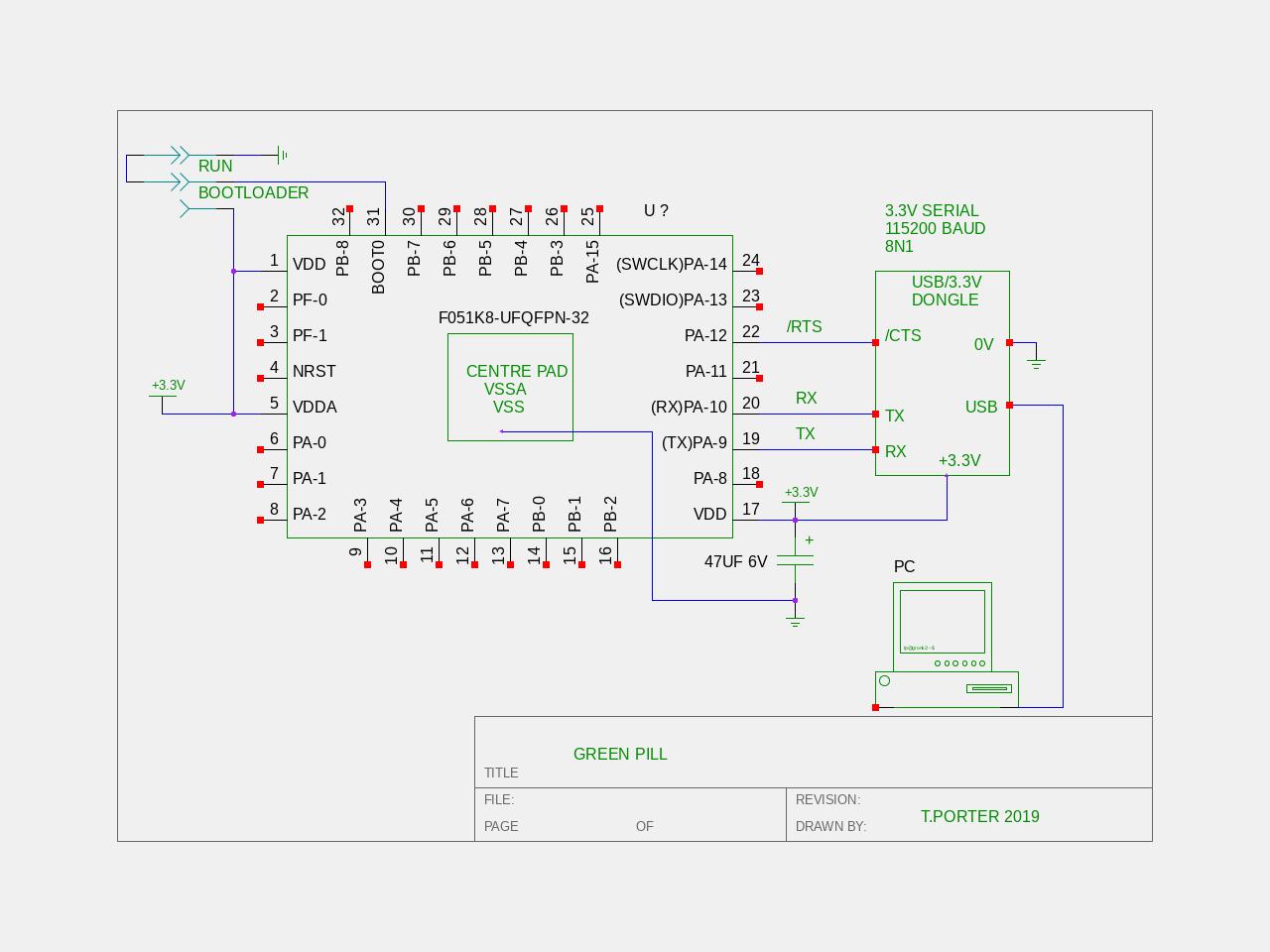> What’s New ? <
STM32 Boards¶
A sample supported by Mecrisp-Stellaris.
See HERE the full list of Supported Chips and Boards.
STM32F Discovery Boards¶
STM32F0 Discovery Board¶
Price: $15
Manufacturer: STM Microelectronics
MCU: STM32F051 up to 48 MHz
Resources: 64K FLASH, 8K parity checked RAM
Features, SWD input, SWD programmer, the usual GPIO pins
Flashing: SWD via the USB connector, see the stlink flashing howto
Note
Negatives: The pins on top are short which makes plug on leads unreliable and this board does not come with a RTC xtal.
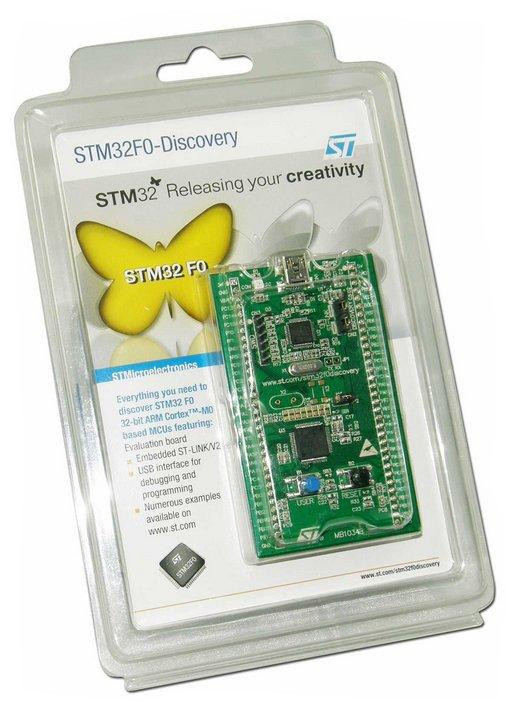
NUCLEO-F411RE Discovery Board¶
Price: $17.00
Manufacturer: STM Microelectronics
MCU: STM32F411RET6
Resources: 512 KB Flash, 128 KB SRAM, GPIO (50), USB
Flashing: SWD via the USB connector, see the stlink flashing howto
Supports Arduino and ST morpho connectivity
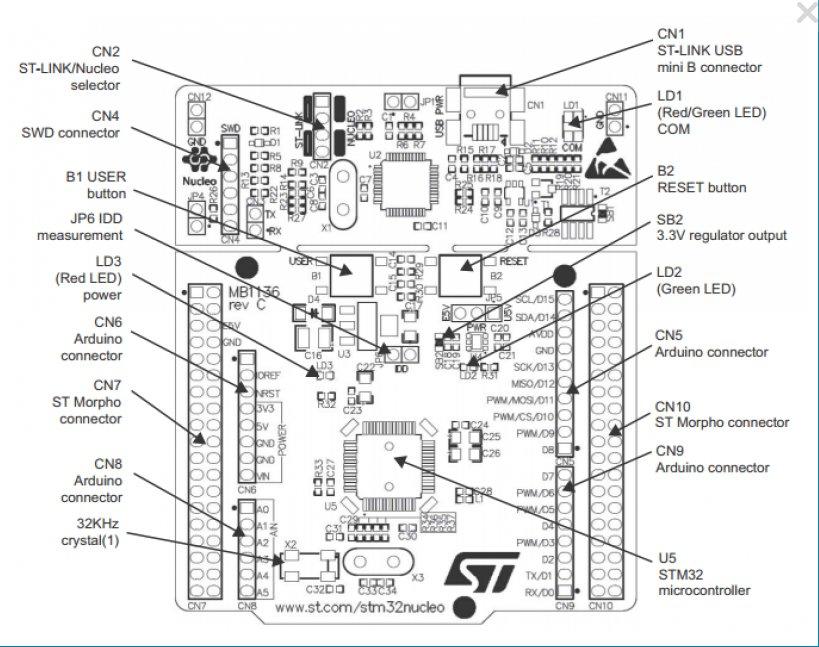
Olimex P103 Board Picture.
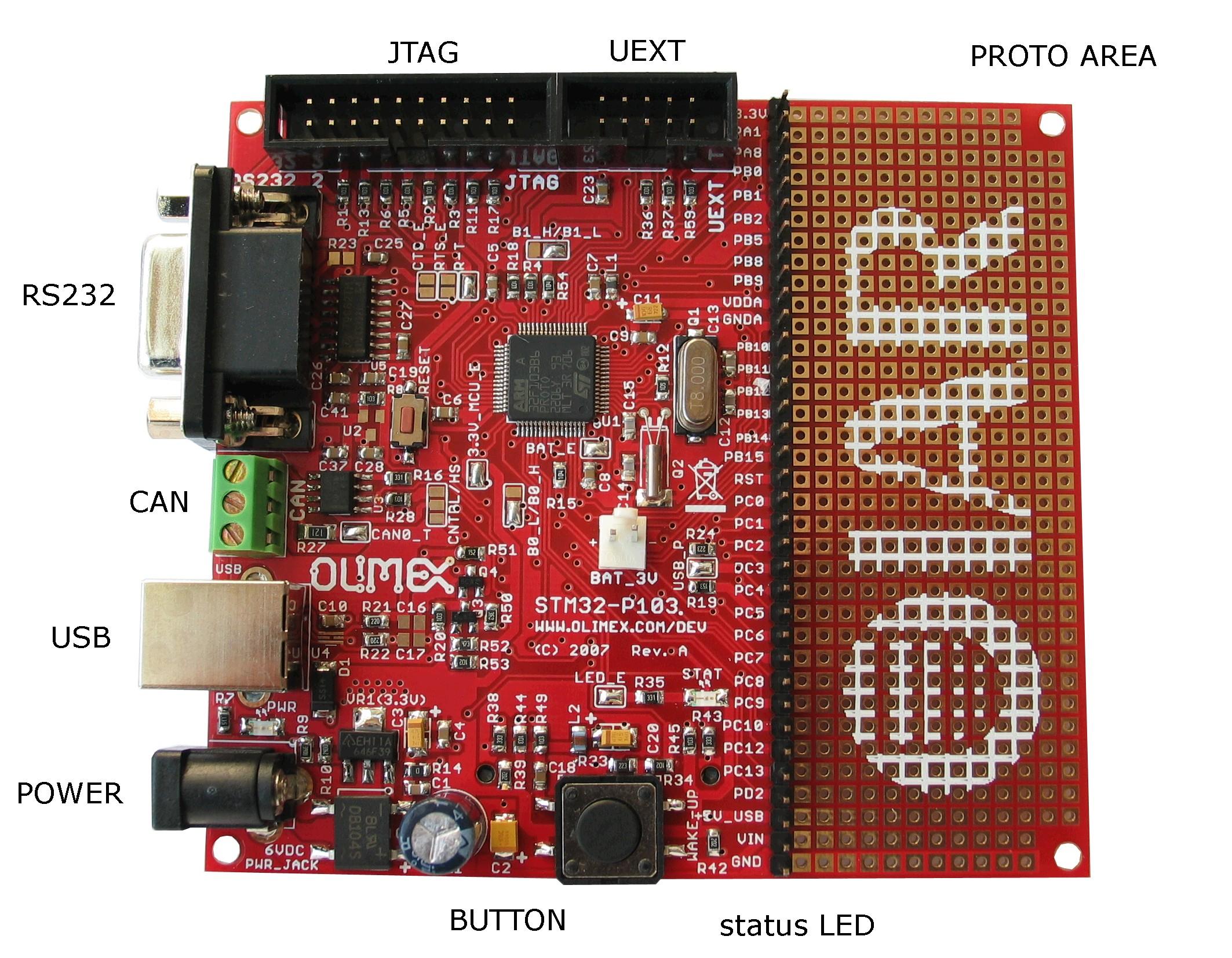
Olimex P103 Board¶
Nicely made, high quality, new genuine STM32F103RBT6 chip
MCU STM32F103RBT6 with 128KB Flash and 20KB Ram
USB, CAN connector, RS232, 2.1mm 6V power socket.
Flashing: via JTAG connector
older board, around $50 new 7 years ago.
Notes about the STM32F103C8T6 used in the “Blue Pill” and “Shenzhen-LC”¶
The STM32F103 is a old ARM Cortex-M3 chip, first announced 11 Jun 2007 and the third ARM family by STMicroelectronics. Whilst this chip is still highly advanced and feature packed compared to all the ancient ATMEL MEGA chips, later STM MCU’s have more modern peripherals.
A free Diagnostics bootable binary I made so you can find out what chip is *really* in your blue pill
https://mecrisp-stellaris-folkdoc.sourceforge.io/bluepill-diagnostics-v1.6.html
Warning
If you’re coming from a Arduino Atmel Mega series the STM32F103 will probably look like advanced alien tech from the future, but don’t be fooled, this is a old chip now.
See also
The STM32F103C8T6 is advertized as having only 64kB Flash, BUT most have a “hidden” second 64kB bank of flash making a total of 128kB Flash! See this page.
STM32F103 Limitations¶
Peoblem Limitation
======== ==========
CAN Bus Shares memory with the usb hardware, which means that usb and canbus cannot be enabled at THE SAME TIME
Serial Comms NO AUTOBAUD
USB Shares memory with the canbus hardware, which means that usb and can cannot be enabled at THE SAME TIME.
USB must use a CRYSTAL unlike later stm32 chips which use only a internal RC clock for USB
Digital to Analogue Converter DOESN’T have one
GPIO I/O port registers Have to be accessed as 32-bit words, half-word or byte accesses are NOT allowed. Very CONFUSING to configure.
GPIO I/O port register Very CONFUSING to configure because of GPIOx_CRH and GPIOx_CRL. Cortex-M0 is MUCH more logical making config trivial.
I2C There are SIX pages of ERRATA for the I2C peripheral
DFU NO DFU bootloader (for flashing via USB)
DEBUG Debug registers CANNOT be read by user software. Workaround: none. Want to read the Device ID via a program ? too bad!
The Blue Pill boards coming out in 2020 seem to have either the STM32F103C8 with the extra non advertised 64KB flash, making a total 128KB flash or the CKS32F103CB with 128KB flash.
Certainly one can still buy STM32F103C8T6’s brand new from reputable resellers such as AVENET, but they’re more expensive than the later and more capable STM models because the STM32F103C8T6’s are a old chip and I guess STM are just keeping the production line going for spare parts.
My personal opinion is that the STM32F103C8T6 is not such a great choice for new projects, but if you have one there is now a Blue Pill Forth Starter Kit for it.
If you’re reading this in 2021 during “the great MCU shortage” a STM32F103 is certainly better than nothing!
I checked Avenet.com on the 19 July 2021 and they had ONE (1) STM32F0xx in stock !
Very Cheap Chinese STM32F103C8T6 Boards¶
STM32F103C8T6 ‘Blue Pill’¶
As of 2019 the STM32F103 is no longer protected under mask work copyright.
Specs¶
Price: around $2
Manufacturer: various
MCU: STM32F103C8T6 Cortex-M3, probably recycled from E-Waste as new chips are around $5 - $7 each from reputable distributors.
Resources: 64-128KB Flash, USB, 8MHz crystal
Flashing: Serial Bootloader, see Mecrisp-Stellaris serial connections and the Serial Bootloader Howto
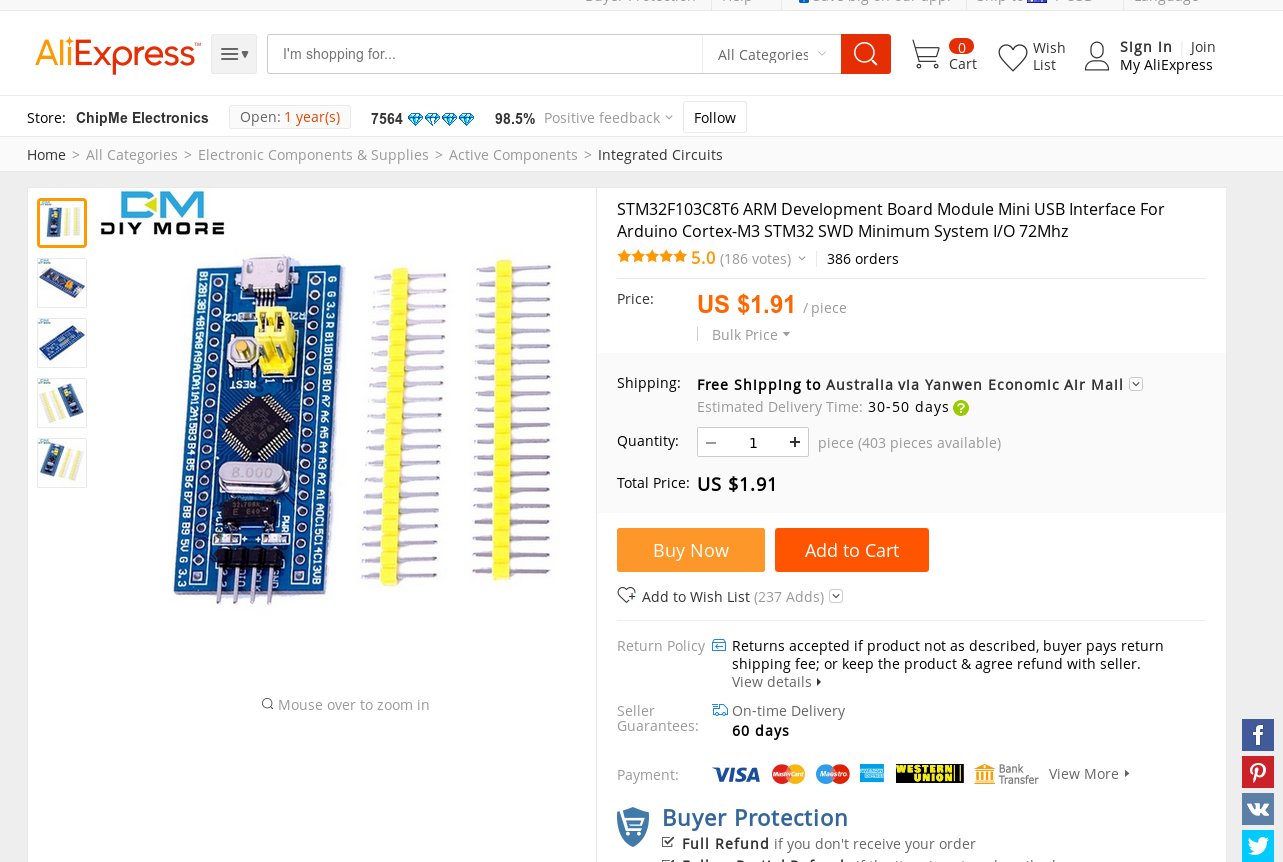
‘Blue Pill’ Pinout Graphic¶
Author [Rasmus-Friis-Kjeldsen]
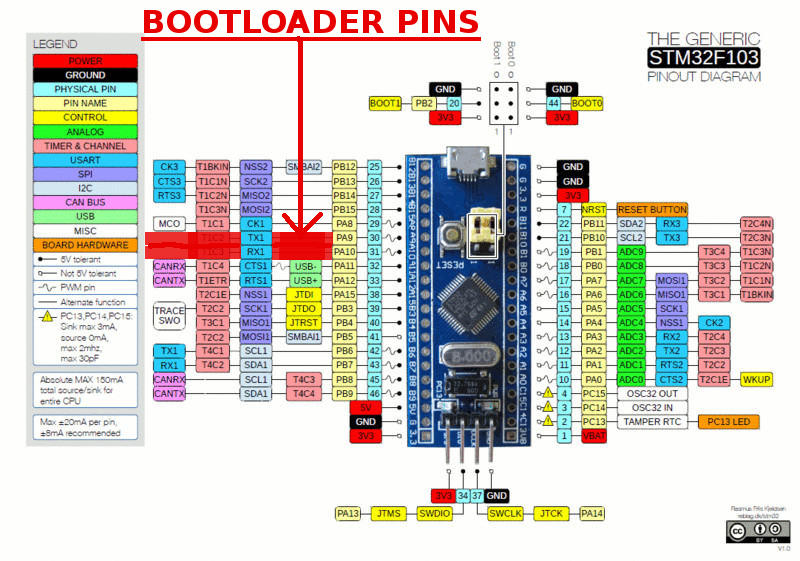
See this excellent webpage for detailed information: http://wiki.stm32duino.com/index.php?title=Blue_Pill
Warning
A friend bought seven of these recently (2018) from two Amazon vendors, and 100% were faulty. Amazon returned her money and she bought two STM32 Nucleos from Amazon, both worked perfectly.
STM32F103 Clones¶
Note
The GigaDevices Cortex M3 “GD32F130xx” (64KB Flash MAX), STM32F103 clone has been around since 2014, and are now starting to appear in the BluePill and similar boards. This clone is not 100% identical to the STM32F103 and will have different USB ID numbers etc, so may it not be recognised by your programmer.
Note
The CKS CS32F103C8T6CS32 is yet another clone of the STM32F103 appearing in the Blue Pill. CS32F103C8T6CS32 comes with an Arm Cortex-M3 core clocked 108 MHz frequency with zero Flash wait states! , 64 to 128KB flash, and 20 KB RAM. A datasheet and user manual are available in Chinese http://www.ckscup.com/upload/CS32F103%E6%89%8B%E5%86%8C.pdf.
Forum Blue Pill Problem Posts¶
Boot0¶
The batch I received refuses to enter boot-mode when jumping BOOT0. I noticed that when using the BOOT0 jumper, the pin on the chip only gets around 1,1V. Bypassing this and crudely connecting 3.3 directly to the pin makes it work! There is a 100k resistor in the way.
USB not working¶
Just for the sake of completeness, I swapped one of the STM32’s on a non working board with a Farnell UK sourced part, after which the board worked entirely as expected. Taken together with the different chip ID, it seems certain that the chips are not actually ST parts and so any of these boards may well not work as expected, certainly for the USB, but quite possibly for other peripherals too. It is one thing getting a different chip with appropriate marking, but mislabeled parts make them too big a gamble for me that taints all the STM32 system minimum boards, with it all but impossible to ensure any quality standard at all.
Shenzhen-LC “mini STM32F103C8T6-board”¶
Note
I bought 12 of these in 2014 for $9 each, one was dead out of the box and missing option jumpers, one died while flashing. At least they appear to have bonafide STM32F103C8T6 MCUS.
Warning
I see that a few of these boards now have rusty header pins, so very low quality solder coating. Are they any better than the Blue Pill which appeared later ? No, I don’t think so, probably very similar in quality.
Specs¶
Price: Around $4 - $9
Manufacturer: Shenzhen-LC
MCU: STM32F103C8T6 Cortex-M3
Resources: 64 Flash, USB, 8MHz crystal, RTC crystal fitted
Flashing: Serial Bootloader, and JTAG see Mecrisp-Stellaris serial connections and the Serial Bootloader Howto
This is essentially the same as a Blue Pill as far as the USB connector and wiring go, it just has an additional 20 pin JTAG connector.
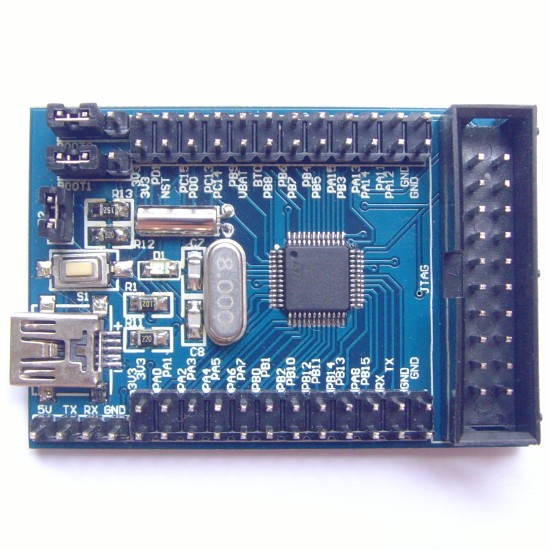
Why not make your own “GREEN PILL”¶
Under $1.50 for brand new authentic parts
Use a modern STM32F051K8 MCU, not a 12 year OLD STM32F103
The board is powered by and talks serially to a PC at 460800 Baud via a $0.90 USB/3.3 Volt dongle
Uses internal 8MHz RC clock.
Only one external component on the board, a 47uF, 6v decoupling PSU capacitor.
Mecrisp-Stellaris was flashed to the chip via the Serial Bootloader method after moving the WHITE option jumper from the “run” to the “bootload” position.
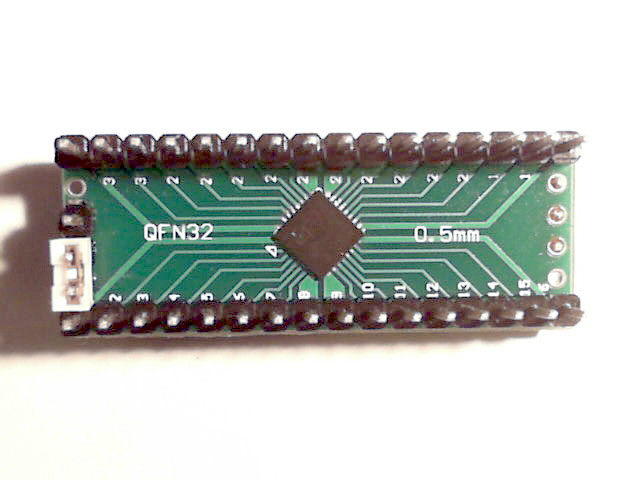
Green Pill Running Forth¶
This is the complete system.
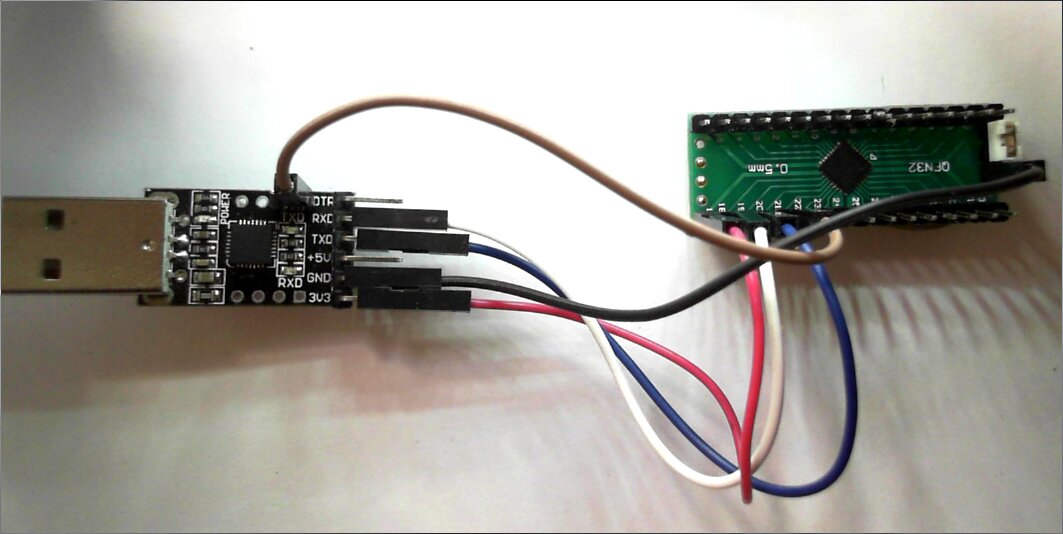
The Terminal Screen¶
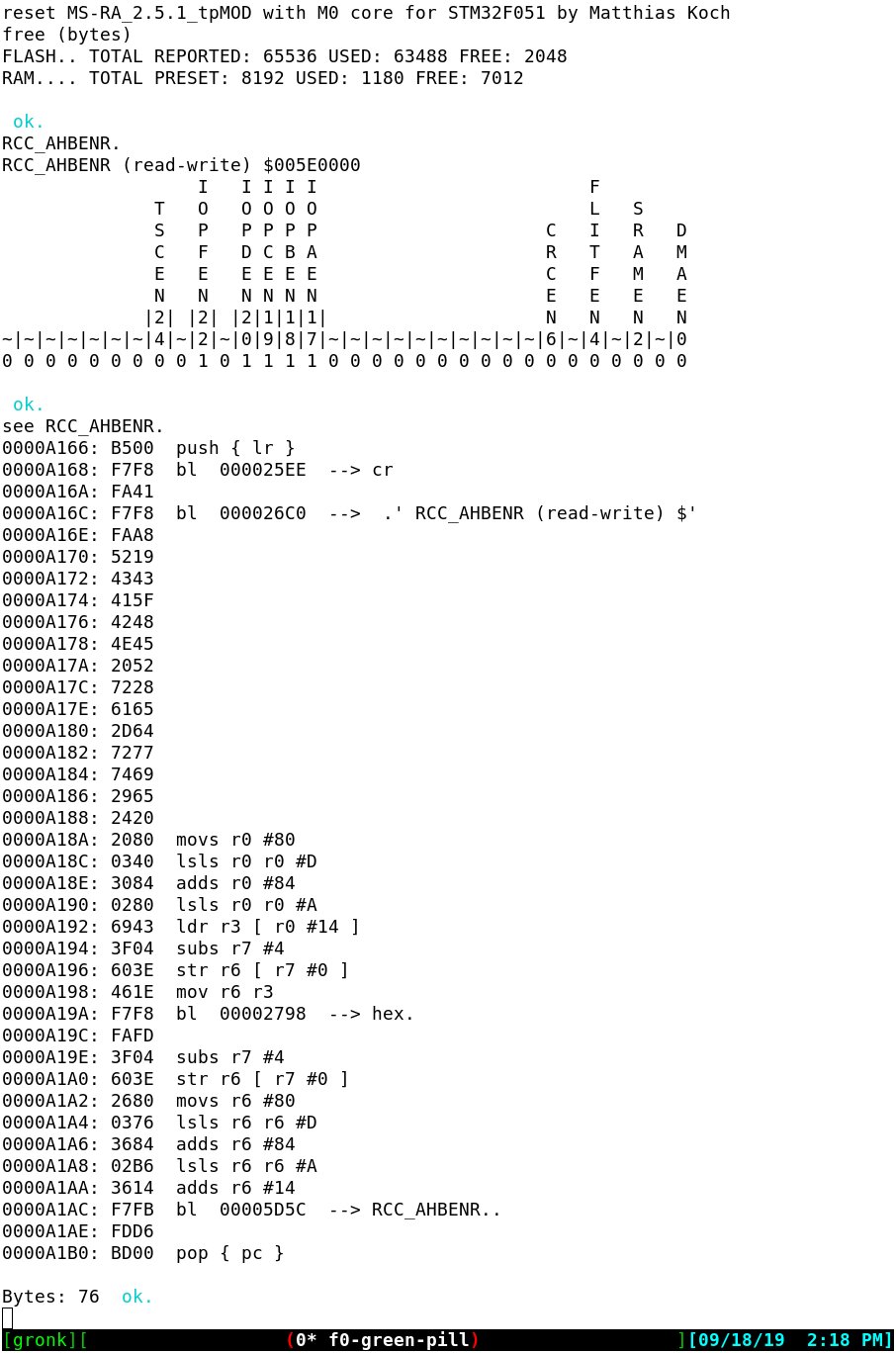
Chip¶
Features¶
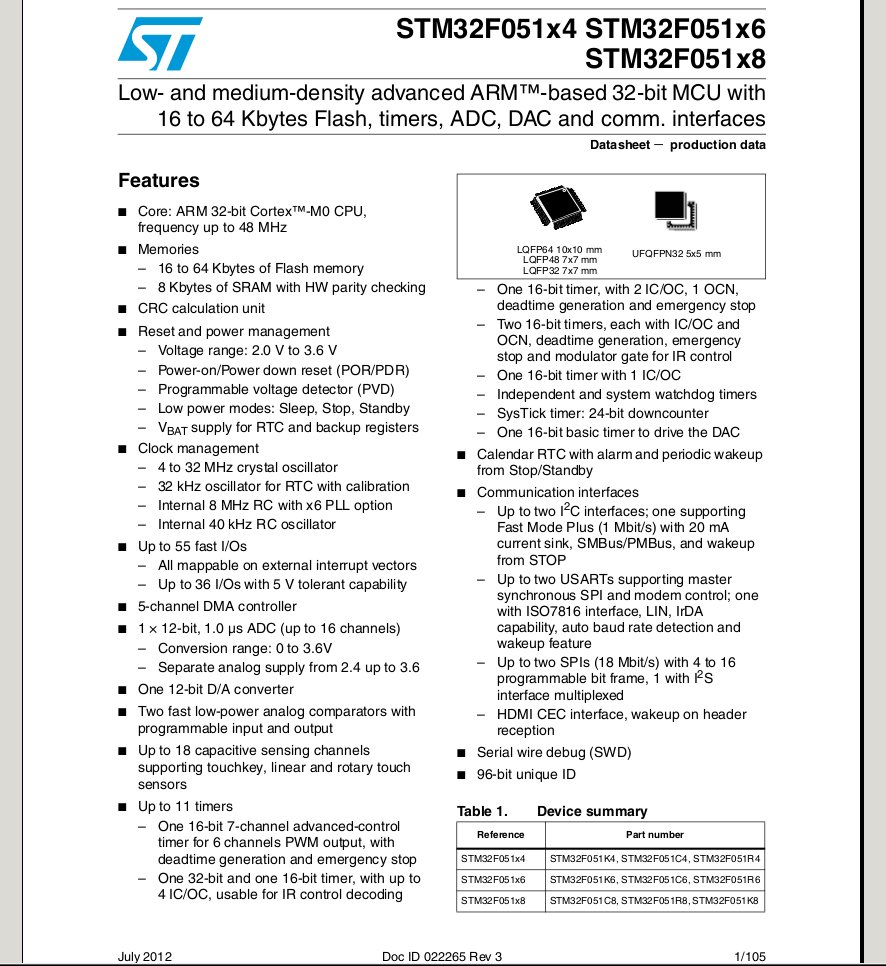
STM32F051K MCU (QFN32 Package)¶
Showing small soldering iron tip used to solder the MCU to the pcb.
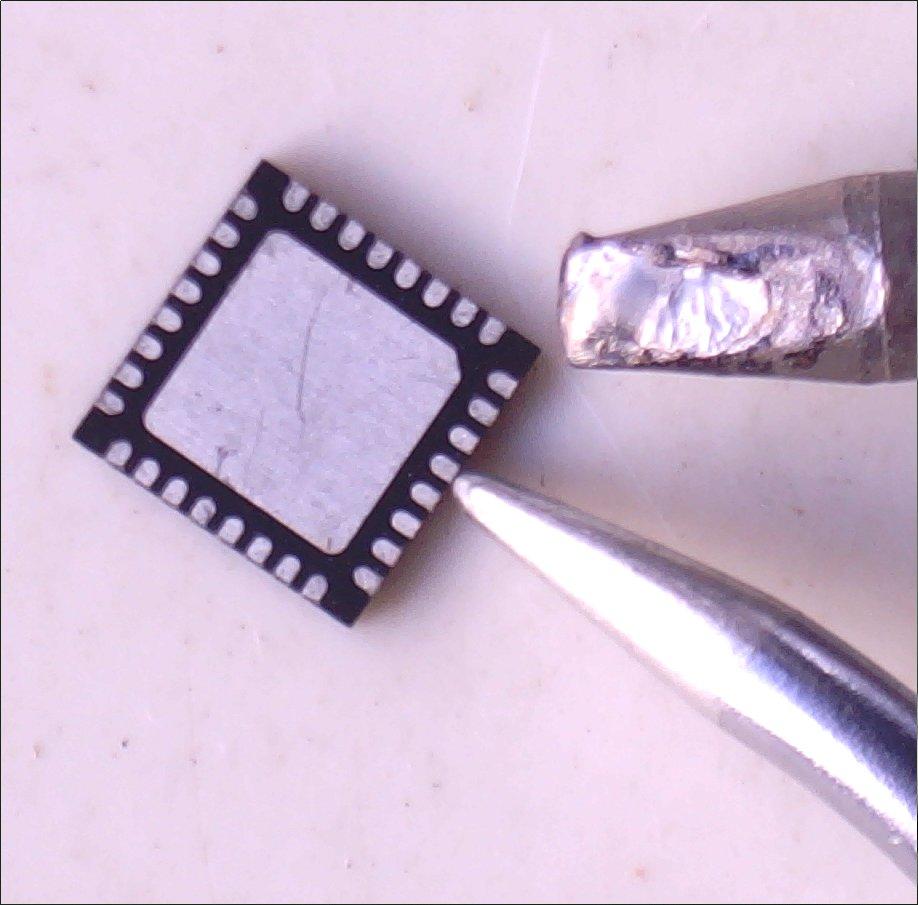
$0.20 Generic QFN40/32 Header Board¶
PCB Header: Top and bottom sides. The top is used for the MCU, the bottom for the wiring.
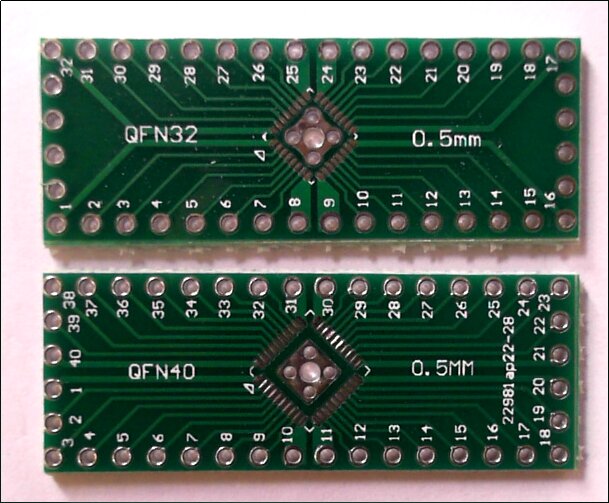
Green Pill: Run Mode¶

Green Pill Bottom View¶
One 47uF 6V filter capacitor on the bottom.
Note¶
No cutting of tracks is needed, just solder the wires as in the pic and according to the schematic. The picture is of my very first prototype, where various options were explored.
Ignore the numbers on the bottom of the PCB, they belong to the QFN40 alternate layout, which isn’t used here. The top QFN32 numbers correspond to the schematic.
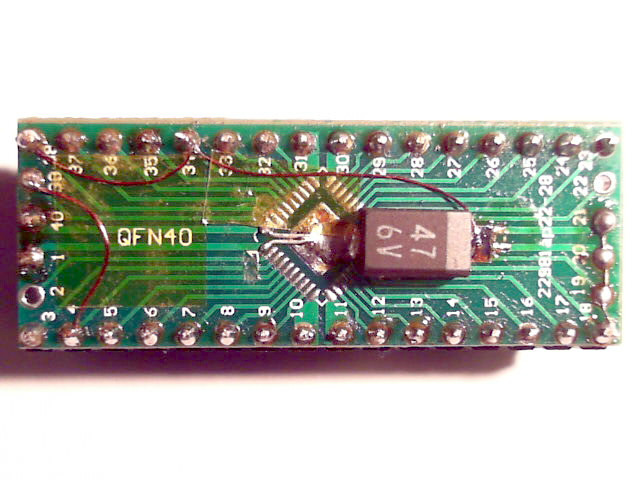
Green Pill Schematic¶
